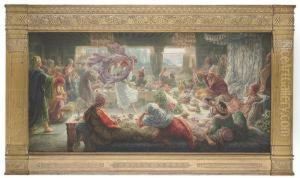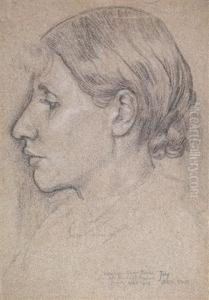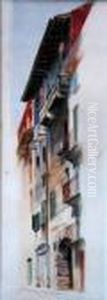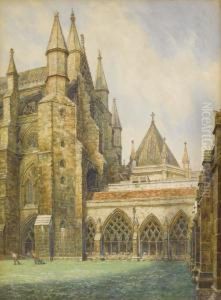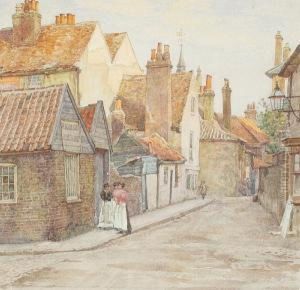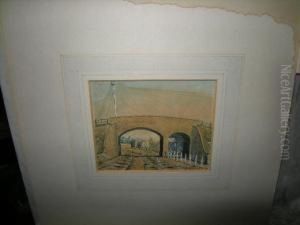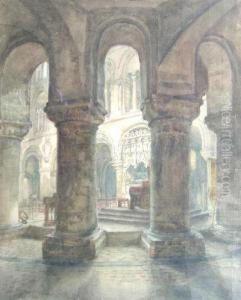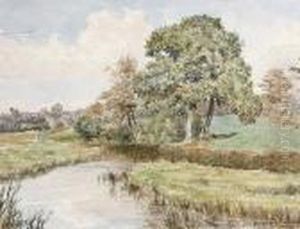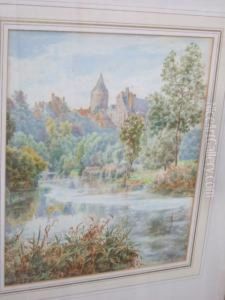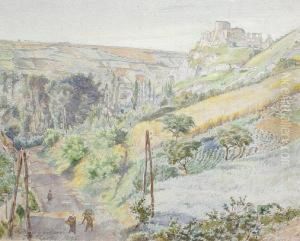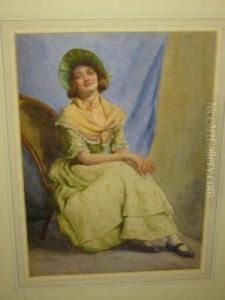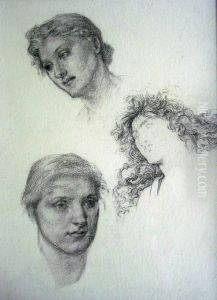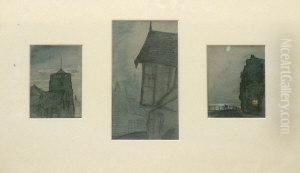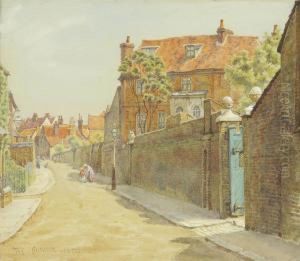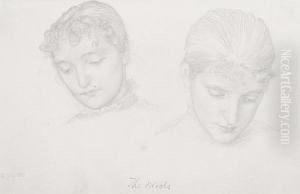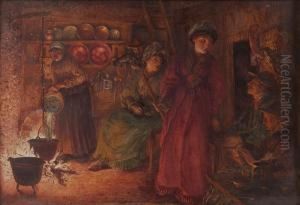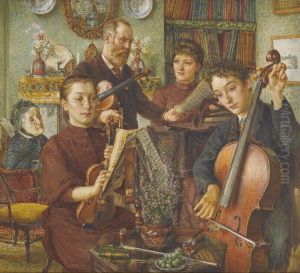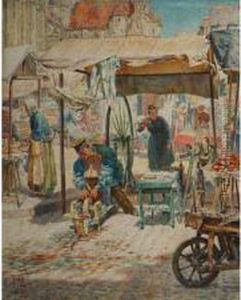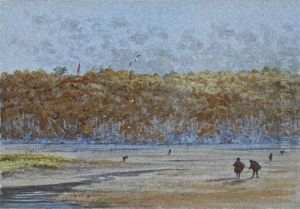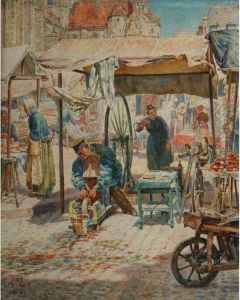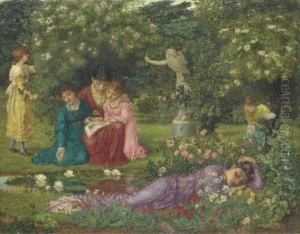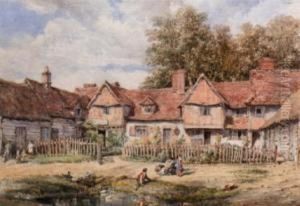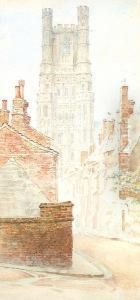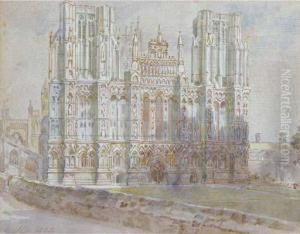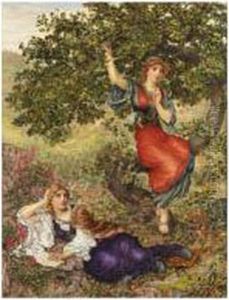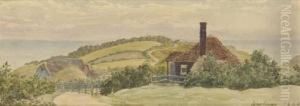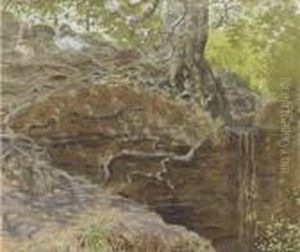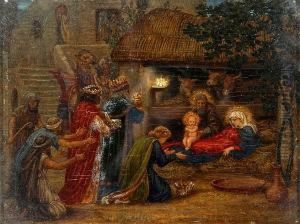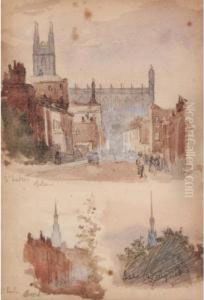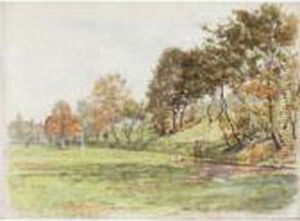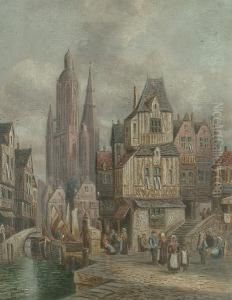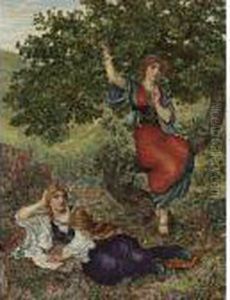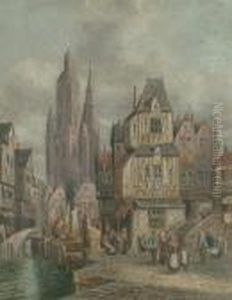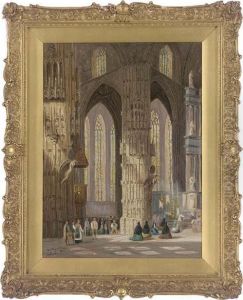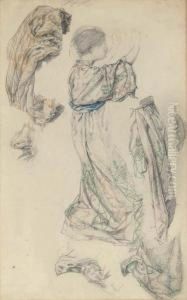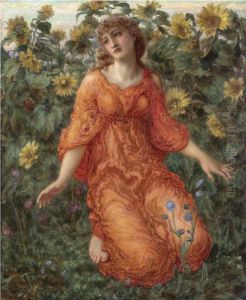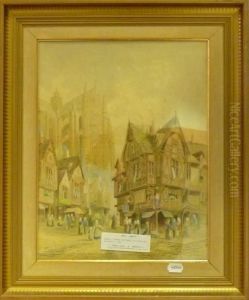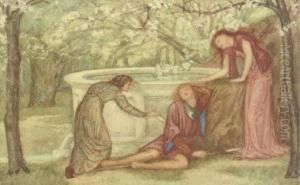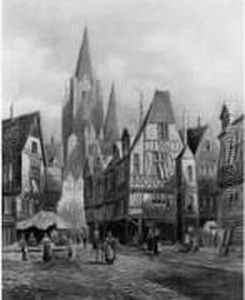Thomas Matthew Rooke Paintings
Thomas Matthew Rooke was a British watercolourist and one of the last Pre-Raphaelite painters. He was born on March 18, 1842, in Stalybridge, Cheshire, England. Rooke's artistic inclination was supported by his family, and he began his formal art education at the Kensington School of Art in London. He later became a pupil of the artist John Ruskin, who was a leading English art critic of the Victorian era, as well as a patron to many Pre-Raphaelite artists. Under Ruskin's guidance, Rooke developed a meticulous and highly detailed style of painting, which was characteristic of the Pre-Raphaelite movement.
Rooke became known for his architectural and natural landscapes, which often incorporated a high level of detail and vibrant colours. His work was influenced not just by Ruskin, but also by other prominent Pre-Raphaelites such as Dante Gabriel Rossetti, with whom he worked as an assistant. Rooke's dedication to accuracy and his skill in depicting textures and intricate patterns became his hallmark.
Despite his association with the Pre-Raphaelites, Rooke also worked on several commissions for the Church of England, creating watercolours of church interiors that are valued for their historical accuracy and detail. He was noted for his topographical and architectural drawings, which have been used as records for restoration work.
Rooke never achieved the same level of fame as some of his contemporaries, but he was respected among his peers and art critics of the time. He exhibited at the Royal Academy and other venues. Later in his career, he also took on the role of a teacher, passing on his techniques and appreciation for detail to the next generation of artists.
Thomas Matthew Rooke continued to work until his late years, maintaining the Pre-Raphaelite tradition well into the 20th century. He died on November 4, 1942, in Richmond, Surrey, leaving behind a legacy of work that continues to be appreciated for its precision and beauty. Rooke's paintings are held in various collections, including the Tate Gallery and the Victoria and Albert Museum in London.
